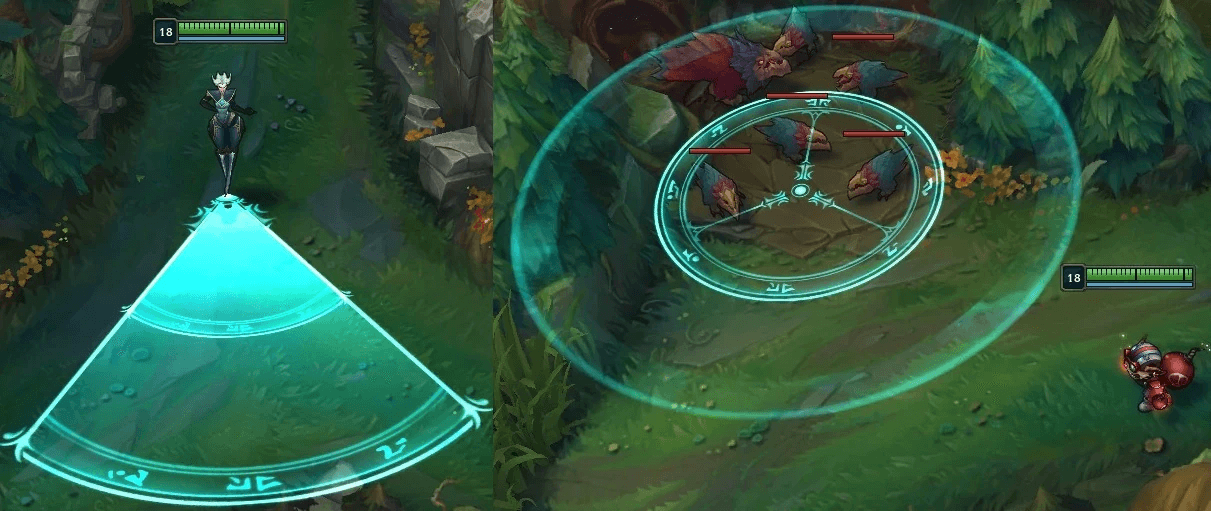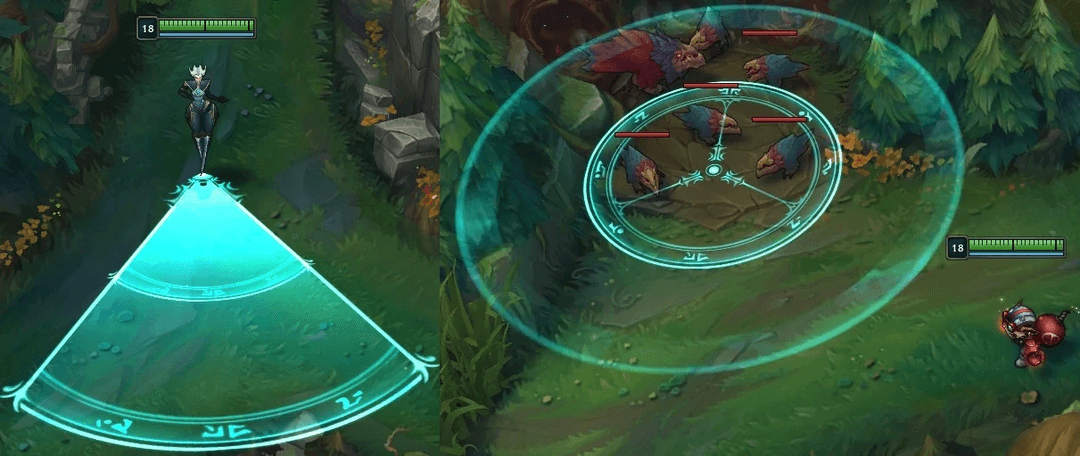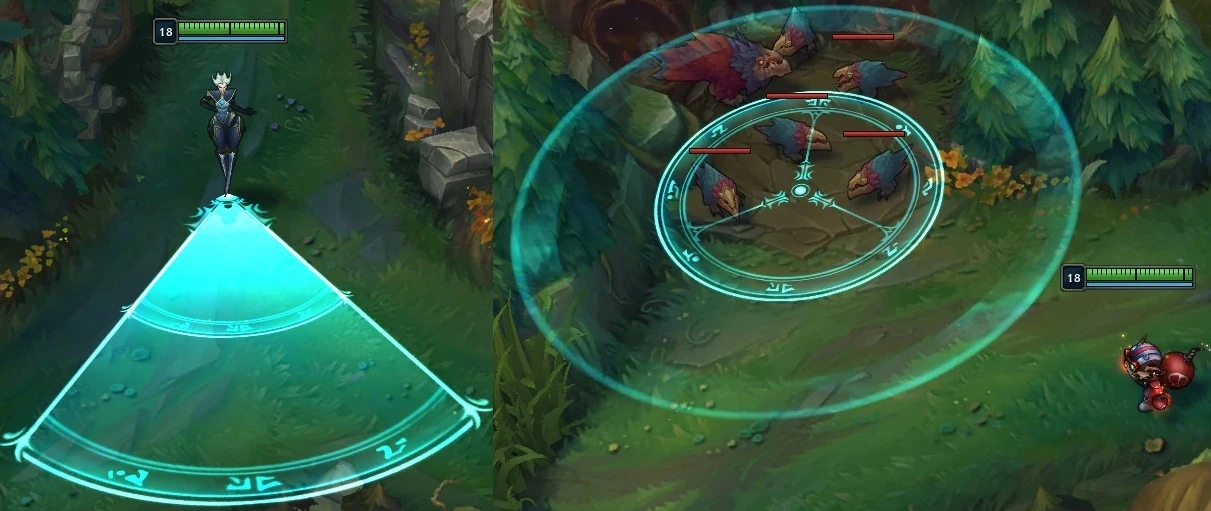


League of Legends, a game of strategy, teamwork, and skill, requires every player to master at least some of the mechanics (micro) to truly excel.
One often-debated mechanic is casting – specifically, the option between Quick Cast (previously called Smart Cast) and Normal Cast.
This article dives deep into the pros and cons of both casting methods, offering insights of to help you decide which is right for you.
At its core, Quick Cast is about speed. When you press a button associated with an ability, the ability is instantly cast towards where your cursor is pointing.
Quick Cast is all about speed. It lets you unleash abilities in a flash by cutting out extra steps. In those split seconds where faster reaction is everything, Quick Cast can tip the scales in your favour. Plus, many players find it feels more intuitive, especially when chaining abilities together for a smooth combo.
What's more, Quick Cast can give you a sharper aim. Since you're skipping that extra confirmation click, your champ releases the skill using less time. It means your opponent has a smaller window to dodge or counter your move, making your attack more likely to hit its mark.
However, Quick Cast has its challenges. One big issue is skillshots accuracy. Without the visual cues that show where an ability will land, it's easier to miss. People new to using Quick Cast might also accidentally use abilities they didn't mean to, all because of how quick it is. And even though it's faster once you get used to it, there's a learning period. Some players might struggle initially before getting the hang of it.
Normal Cast, on the other hand, requires two actions: pressing the ability key activates the range indicator, and another click casts it on mouse target.

With Normal Cast, players get a visual guide showing exactly where their skill will go. It helps a lot in being precise. It also lets players take a moment to plan their next step, leading to smarter plays. And for those just starting in League of Legends, this way feels friendlier with the added guidance it offers.
However, there are some challenges with Normal Cast. The main one is speed. Since players need to take two steps to use a skill, it can feel a bit slow, especially during quick battles. This slower pace can also make it tough to manage multiple skills simultaneously. And, sometimes, when you have more time to think, you might second-guess yourself and miss a golden opportunity to act.
The debate between Quick Cast and Normal Cast is not a simple one-size-fits-all answer. It boils down to two factors: speed versus precision.
People often debate whether playing with Quick Cast or Normal Cast is better, but it's not just about picking one over the other. It's about weighing up speed against accuracy. With Quick Cast, it's about reacting fast and getting your abilities out in a flash.
On the other hand, Normal Cast gives you a better chance to place your skills accurately. The best choice between the two often depends on which champion you're playing and your play style.
For those new to League of Legends, starting with Normal Cast might feel more comfortable. If you're still learning the ropes, Normal Cast can be kinder to you. But as you get to know the game better, you might feel that Normal Cast delays your performance.
Keep in mind that every game is different. There are moments when accuracy is critical and other times when speed is everything. Choosing between Quick Cast and Normal Cast at the right time can impact your gameplay.

Some League of Legends champions and their abilities are prime examples of when to use Quick Cast or Normal Cast. Let's explore a few.
Ezreal's Mystic Shot (Q): This is a linear skill shot that fires quickly. Many players choose Quick Cast for this ability because when playing Ezreal, you're often weaving this skill into your combos and trying to land rapid shots. The faster you can get this shot off, the better.

Ahri's Orb of Deception (Q): A skill shot that goes out and then returns to Ahri. Players often Quick Cast this to ensure they can throw it out rapidly in the direction of their cursor, especially when chasing enemies or dodging incoming threats.

Riven's Broken Wings (Q): Riven's Q is a three-part combo that requires fast inputs. Quick Cast enables Riven players to chain these movements smoothly, making her dashes and strikes flow seamlessly.

Thresh's Flay (E): This ability pushes or pulls enemies in a specific direction. The precise direction and timing of Flay can significantly influence the outcome of an engagement. Many players use Normal Cast for Flay to have a clear visual of its range and direction, ensuring they can effectively disrupt their opponents' actions or position them advantageously.

Veigar's Event Horizon (E): This ability creates a cage that stuns enemies on its edges. The precise placement can differ between trapping multiple enemies or missing entirely. With Normal Cast, players get a clearer idea of where the cage will form.

Zoe's Paddle Star (Q): This skill shot has a unique mechanic where it can be redirected mid-flight. Given its potential range and the importance of landing a max-range shot for maximum damage, many players prefer Normal Cast to gauge its trajectory better.

Top-tier players often have a preference for how they cast abilities, but many switch between the two depending on the champion they're playing and their role in-game.
Both pro players Froggen and Dopa use normal casts. However, depending on the champions, they will switch. For example, when Dopa is playing Leblanc or Yasuo he will swap to smart cast.
Additionally, a support player who relies on precise skill shots might prefer Normal Cast. In contrast, a mid-laner executing quick combos could lean towards Quick Cast.
Riot Games designed both Quick Cast and Normal Cast to have their merits. Your choice should align with your gameplay style, the champions you play, and the situations you find yourself in. Experiment with both, find your comfort zone and remember: mastering the mechanics is a continuous journey.